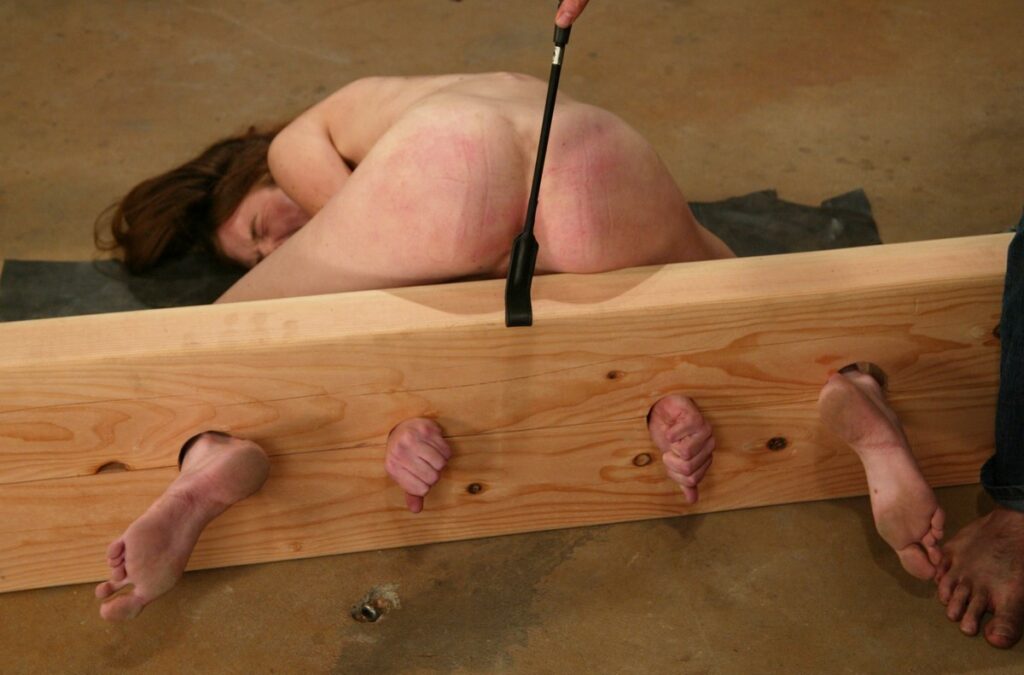Stocks are rigid wooden or metal devices designed to restrain limbs, and sometimes the neck. Historically, they were used to immobilize criminals during punishments and served as a standalone form of public humiliation when individuals were displayed in stocks. In the BDSM context, stocks serve a bondage purpose, allowing the dominant partner to restrict the submissive’s movements during S&M activities or sexual encounters. They are simple and reliable devices that do not require advanced skills to use (unlike ropes) and provide a more rigid restraint compared to shackles. A significant drawback of stocks is their fixed hole sizes, but this issue can easily be remedied today with elastic, porous rubber inserts that prevent chafing with larger holes or constriction with smaller ones.
Wooden Stocks: There are various designs of wooden stocks, each with its own advantages and disadvantages. Separate stocks for hands (which usually include a neck hole) or feet are compact and user-friendly. Combined stocks that restrain both hands and feet are larger, stationary BDSM furniture that often has a fetishistic appeal. Sometimes, these stocks consist of three plates with a neck hole as well; this can make the submissive’s position uncomfortable. A specific type known as the “woman’s fiddle” differs from traditional stocks as it restrains the arms in front of the head rather than beside it. Visually, this device resembles a fiddle and is typically lightweight (historically made from simple twigs).
Metal Stocks: Modern stocks are often made from metal. They can be solid—constructed from steel strips on hinges that mimic the shape of traditional wooden stocks—or they can be detachable. In this case, the set includes braces with rings at the ends and clamps that are placed on the limbs and neck. These clamps typically consist of two parts that close after being connected with a carabiner, screw, latch, or lock. A set of several such braces and five clamps allows for various positioning of the submissive, especially with additional rings or holes in the braces. The braces do not necessarily need to be of different lengths; they can be modular. Length can be adjusted with a threaded bolt secured with wingnuts or a turnbuckle. There are also completely rigid, cross-shaped metal stocks available.

